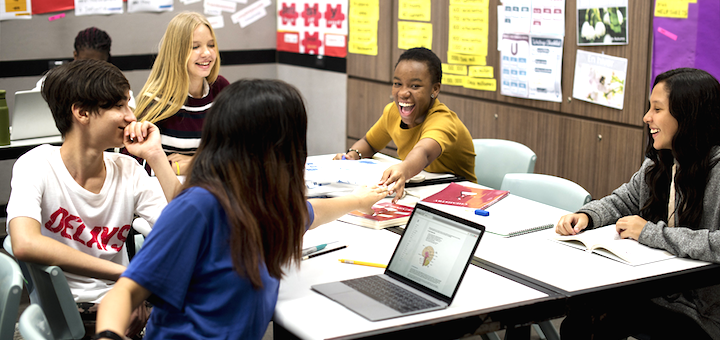How to Foster Critical Thinking Skills in Students
In today’s rapidly changing world, the ability to think critically is more valuable than ever. Critical thinking empowers students to analyze information, solve complex problems, and make informed decisions. It is a core skill essential not only for academic success but also for navigating real-life situations. Yet, fostering critical thinking in students remains a challenge in many traditional education systems focused primarily on rote memorization. This blog explores effective strategies educators and parents can use to cultivate strong critical thinking skills in students.
What is Critical Thinking?
Critical thinking is the process of actively analyzing, interpreting, evaluating, and synthesizing information to make reasoned judgments. It involves questioning assumptions, identifying biases, considering alternative perspectives, and applying logic to solve problems.
In essence, a critical thinker does not simply accept information at face value but seeks to understand the “why” and “how” behind it.
Why Critical Thinking Matters
- Promotes deeper understanding of academic subjects
- Enhances problem-solving and decision-making
- Improves communication and reasoning skills
- Encourages independent and lifelong learning
- Prepares students for real-world challenges in a data-driven society
Now, let’s explore proven strategies to nurture this essential skill in students.
1. Encourage Curiosity and Questioning
A curious student is a thinking student. Teachers and parents should create an environment where questions are welcomed and valued. Instead of simply providing answers, encourage students to ask “why,” “how,” and “what if.”
How to Apply:
- Start class discussions with open-ended questions.
- Use prompts like “What do you think?” or “Can you explain your reasoning?”
- Reward thoughtful questions as much as correct answers.
This cultivates an inquisitive mindset and motivates students to explore topics beyond surface-level understanding.
2. Promote Socratic Dialogue
The Socratic method involves engaging students in dialogues that challenge their ideas and push them to think more deeply. By asking probing questions, teachers can guide students to discover answers on their own.
Examples of Socratic Questions:
- What evidence supports your opinion?
- Could there be another explanation?
- How would you defend that position?
This approach encourages students to reflect critically, defend their views, and consider different perspectives.
3. Use Real-World Problems
Applying classroom knowledge to real-life scenarios boosts critical thinking. When students encounter complex, ambiguous problems, they must analyze, evaluate options, and make decisions.
Ideas:
- Discuss current events or ethical dilemmas.
- Use project-based learning (PBL) to explore community issues.
- Encourage students to design solutions for real-world challenges.
This not only makes learning more relevant but also prepares students for future problem-solving.
4. Teach Metacognition
Metacognition—thinking about one’s thinking—is key to developing critical thinking skills. Students should be aware of how they learn, what strategies they use, and how they can improve their reasoning.
Classroom Activities:
- Ask students to journal about how they approached a task.
- Include reflective questions after assignments (e.g., “What strategy worked best?”).
- Teach them how to identify logical fallacies and cognitive biases.
These practices enhance self-awareness and foster intentional, strategic thinking.
5. Incorporate Collaborative Learning
Group activities encourage students to challenge each other’s ideas, defend their own, and work toward shared goals. These peer-to-peer interactions sharpen reasoning and communication skills.
Examples:
- Debates and role-plays
- Group problem-solving sessions
- Peer review of essays and projects
Collaboration exposes students to diverse viewpoints, helping them refine their thoughts and become more open-minded.
6. Utilize Technology and Digital Tools
Technology can be a powerful ally in fostering critical thinking. Interactive learning platforms, simulations, and digital storytelling tools allow students to experiment, analyze outcomes, and reflect on their choices.
Tools to Consider:
- Padlet for collaborative brainstorming
- Kialo for structured debates
- Google Forms/Docs for feedback and peer review
- Mind mapping tools like MindMeister
These digital resources make learning engaging while supporting analytical thought and structured reasoning.
7. Assign Thought-Provoking Writing Tasks
Writing forces students to organize their thoughts, construct arguments, and support claims with evidence—all of which promote critical thinking.
Tips:
- Use persuasive and analytical essay prompts.
- Encourage evidence-based writing.
- Ask students to critique articles or media sources.
Writing across subjects—science, history, literature—can be a consistent way to build this skill.
8. Create a Safe Space for Intellectual Risk-Taking
Students are more likely to think critically when they feel safe to share ideas without fear of judgment. A supportive learning environment builds confidence and fosters open-minded discussions.
How to Encourage This:
- Praise effort and reasoning, not just correct answers.
- Normalize mistakes as part of the learning process.
- Celebrate diverse perspectives and ideas.
Psychological safety is crucial for students to step outside their comfort zones and engage in deeper thinking.
Conclusion
Critical thinking is not a skill that develops overnight—it requires consistent practice, guidance, and encouragement. Educators and parents play a vital role in shaping a child’s ability to think clearly and independently. By fostering curiosity, encouraging open dialogue, presenting real-world challenges, and leveraging both collaboration and technology, we can help students build strong critical thinking foundations that will benefit them for a lifetime.
In a world overflowing with information, the ability to analyze, question, and reason is more essential than ever. Teaching students how to think, not just what to think, is the key to preparing them for future academic, professional, and personal success.



